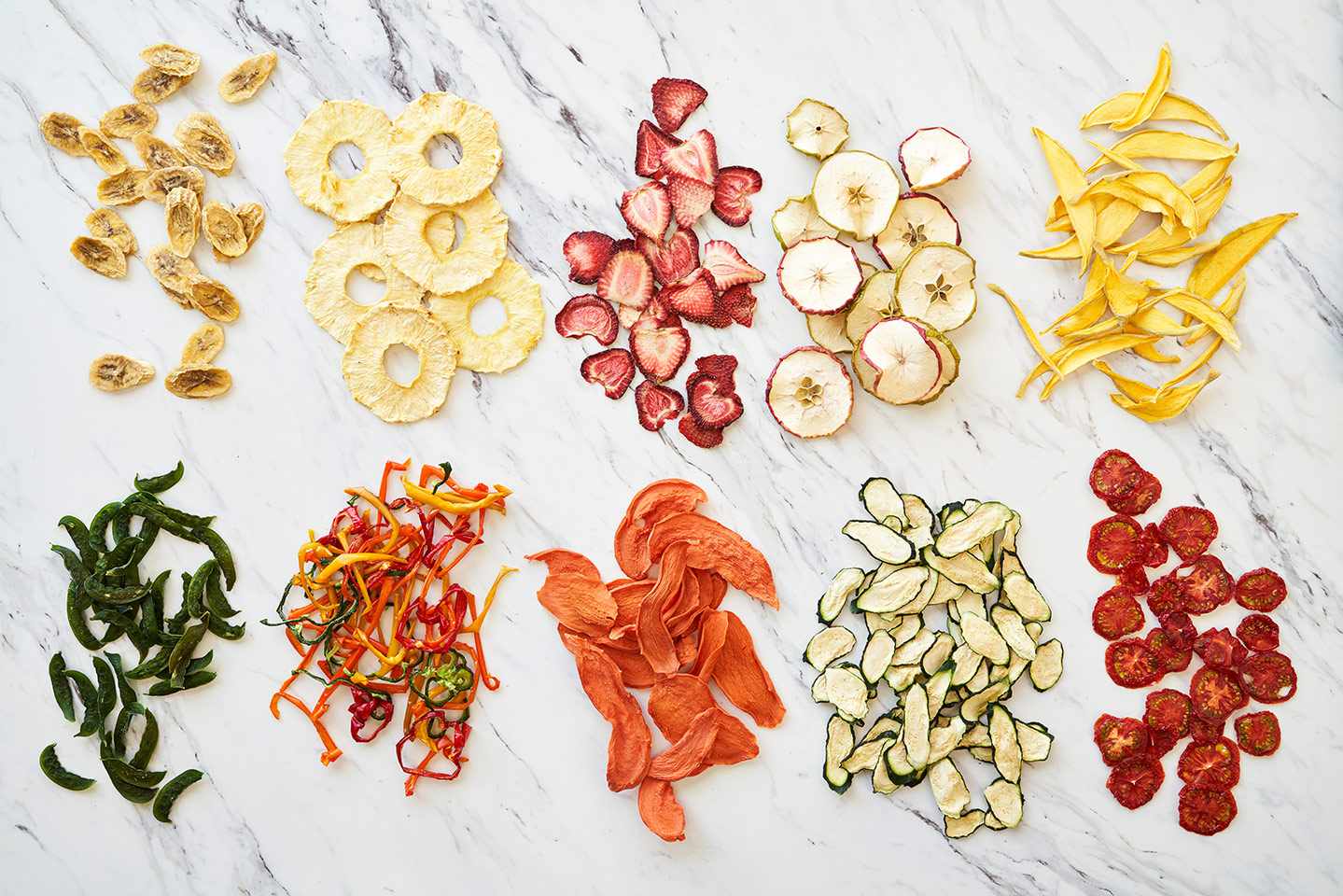Dehydrating
Dehydrating food reduces the moisture content by around 80-90%, enough to retard bacterial growth. Dehydrating can be done in the sun or in an oven. Several important differences exist between freeze dried and dehydrated food. Freeze-dried food loses moisture up to 98-99% whereas dehydrated food loses moisture never more than 95% moisture. Therefore, the shelf life of freeze-dried food can be longer up to 25 years while the shelf life of dehydrated food is 4-10 years, maybe up to 15 years. Furthermore, 97% of the original nutrients are retained in the freeze-dried food while only 5-60% of nutrients are retained in the dehydrated food. There is a substantial cost difference. A small freeze dryer is $2500 or more, whereas a small electrical dehydrating oven, like the one shown below is about $40 at Wal.mart and the sun oven can be built for about the same amount.

Presto 06300 Dehydro Electric Food Dehydrator4.4354
I got these plans for a nice solar dehydrator from Mother Earth News.

Illustration: Scott MacNeill.
What Foods Can Be Dehydrated?
The following fruits and vegetables are often dehydrated: Bananas, pineapple, strawberries, apples, pear, beans, peppers, zuccini and tomatoes.

Other Dehydrated Foods
1. Meat– making your own beef jerky can be as simple as boiling your beef, mixing a sauce of your choice (garlic powder, onion powder, red pepper flakes, salt and honey work well), and coating the beef. Then, all you have to do is bake it at a low temperature (about 80°C) for 3 to 4 hours, and you have your own homemade tasty beef jerky.
2. Vegetable Chips made from potatoes, turnips, mushrooms, kale or tomatoes can replace potato chips for a healthier snack. Cut into uniform slices, season and dehydrate at the lowest temperature for around 4 hours.
3. Fruit leather can be made by dehydrating a fruit smoothie. After adding add some lemon juice and honey, blend them up, and then dehydrate them. Spread the blended fruit on a lined baking sheet and dehydrate at the lowest temperature for around 6 hours.
4. Pemmican is originally a Cree word for rendered fat. Pemmican is a food used by a variety of Native peoples for many generations, and was adopted by the fur traders in the 18th and 19th centuries. It likely originates from North America. Native American scouts who spent a great deal of time on the go depended on having portable, high-energy, highly nutritious, and filling foods that would last for long periods of time. Often times pemmican was their food of choice.
This amazing stuff is a dried mixture of meat, berries and rendered fat. It is an invaluable survival food that when prepared properly using good pemmican recipes can last anywhere from several months to several years without refrigeration!
Long-term storage – like all foods, light, heat, oxygen and moisture are the enemies of dehydrated food so proper storage involves eliminating or reducing exposure to these enemies so far as possible.

